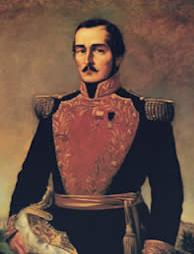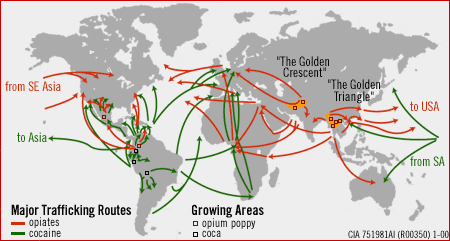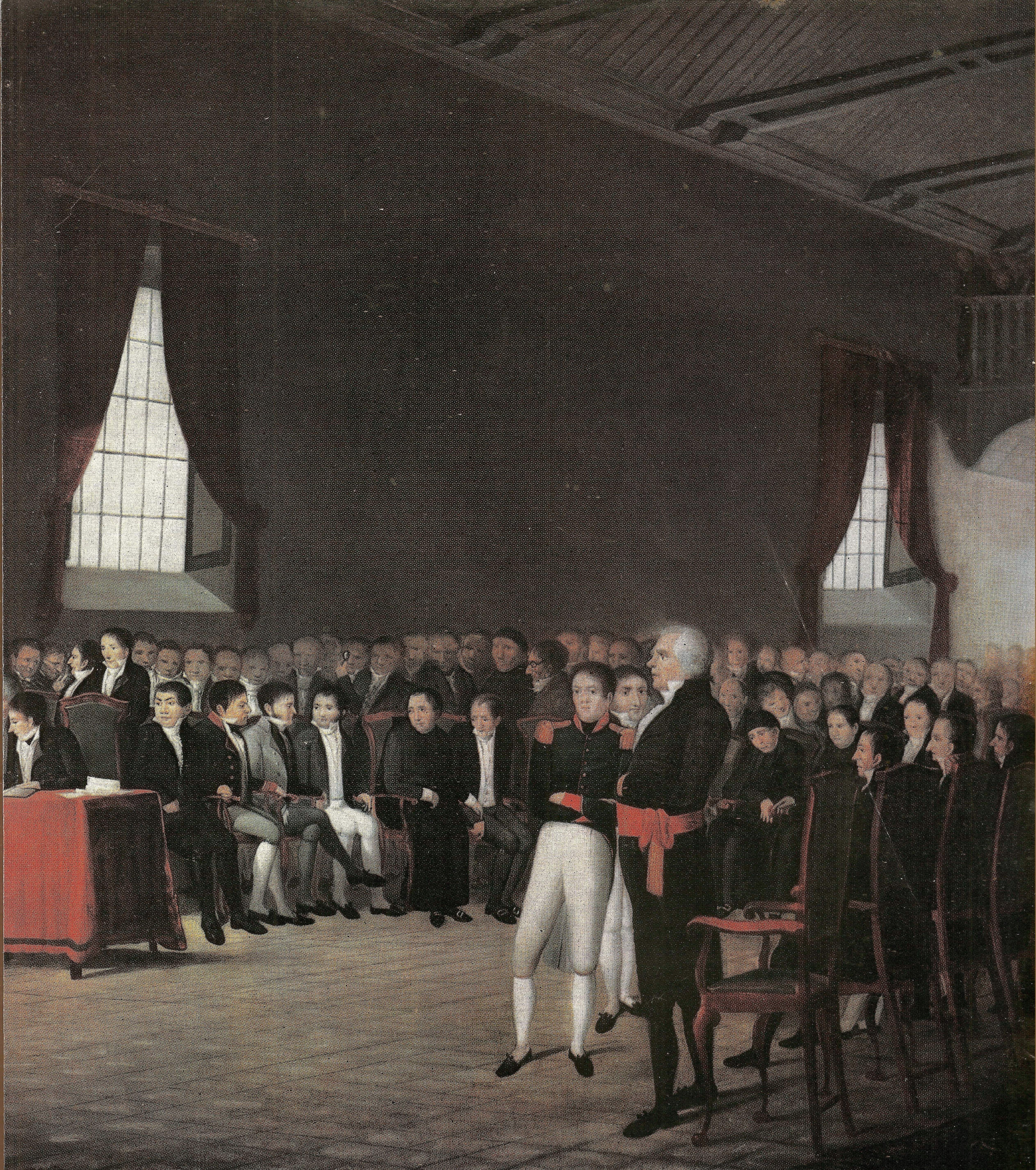|
Venezuela–Colombia Boundary Treaty Of 1941
The Colombia–Venezuela Boundary Treaty of 1941, officially the Border Demarcation Agreement and Navigation of the Common Rivers between Colombia and Venezuela, and unofficially the López de Mesa-Gil Borges Treaty, was an agreement signed between the governments of Colombia and Venezuela on the land border limits on April 5, 1941, in Colombian city of Cúcuta, by the Ministers of Foreign Relations of Venezuela, Esteban Gil Borges, and Colombia, Luis López de Mesa. After almost 60 years of negotiations on the demarcation of the Venezuelan–Colombian border (1881–1938), the treaty of 1941 put an end to this long process. In this treaty, both parties acknowledged that the border had been fully demarcated, differences over boundary matters were completed, and recognized the work carried out by the 1901 Demarcation Committee and the Swiss experts Committee as valid demarcation. The exchange of ratifications of this agreement was made in Caracas, on September 12, 1941. The l ... [...More Info...] [...Related Items...] OR: [Wikipedia] [Google] [Baidu] |
Cúcuta
Cúcuta (), officially San José de Cúcuta, is a Colombian municipality, capital of the department of Norte de Santander and nucleus of the Metropolitan Area of Cúcuta. The city is located in the homonymous valley, at the foot of the Eastern Ranges of the Colombian Andes, on the border with Venezuela. It comprises an area of approximately 1119 km2, with an urban area of 64 km2 (divided into 10 communes) and a rural area of 1055 km2 (divided into 10 townships). The city has a population of 777,106 inhabitants, which makes it the most populous municipality in the department and the sixth most populous municipality in the country. Similarly, its metropolitan area (made up of the municipalities of Villa del Rosario, Los Patios, El Zulia, San Cayetano and Puerto Santander) has an approximate population of 1,046,347. The city was founded as a parish on June 17, 1733, by Juana Rangel de Cuéllar, resident of Pamplona in the area under the name of ''San José de Guasimales'', as ... [...More Info...] [...Related Items...] OR: [Wikipedia] [Google] [Baidu] |
Luis López De Mesa
Luis Eduardo López de Mesa Gómez (October12, 1884October18, 1967) was a Colombian medical doctor, Harvard psychiatrist, Dean of the National University of Colombia The National University of Colombia () is a national public research university in Colombia, with general campuses in Bogotá, Medellín, Manizales and Palmira, and satellite campuses in Leticia, San Andrés, Arauca, Tumaco, and La Paz, Ces ..., Minister of National Education, and Minister of Foreign Affairs. Works * El libro de los apólogos (1918) * La biografía de Gloria Etzel (1921) * El factor étnico (1927) * Civilización contemporánea (1926) * La tragedia de Nilse (novela, 1928) * Biografía de Gloria Etzel (novela, 1929) * Introducción a la historia de la cultura en Colombia (1930) * Cómo se ha formado la Nación colombiana (1934) * Disertación sociológica(1939) * Miguel Antonio Caro y Rufino José Cuervo (1944) * Nosotros y la Esfinge (1947) * Perspectivas culturales (1949) * Escrutinio so ... [...More Info...] [...Related Items...] OR: [Wikipedia] [Google] [Baidu] |
Esteban Gil Borges
Esteban Gil Borges (Caracas, 1879 – Caracas, 3 August 1942), was a Venezuelan politician, diplomat, writer and university professor. �Biography at Venezuelatuya.com Dictionary of History of Venezuela��, Polar Foundation, 1997. Biography Esteban Gil Borges was born in 1879 in Caracas, Venezuela. He worked as a lawyer, diplomat, and politician. He was the 147th Minister of Foreign Affairs of Venezuela from 2 January 1919 until 7 July 1921. Esteban Gil Borges was a member of the Venezuelan Academy of Language (1916) and a founding member of the Academy of Political Sciences (1915). See also *Colombia–Venezuela relations *List of Ministers of Foreign Affairs of Venezuela The following is a list of Ministers of Foreign Affairs of Venezuela since 1830, when Venezuela achieved independence after the dissolution of Gran Colombia. The founding minister was Diego Bautista Urbaneja, who held multiple terms. The current ... References Biography of the Foreign Affairs Ministr ... [...More Info...] [...Related Items...] OR: [Wikipedia] [Google] [Baidu] |
International Treaty
A treaty is a formal, legally binding written agreement between actors in international law. It is usually made by and between sovereign states, but can include international organizations, individuals, business entities, and other legal persons. A treaty may also be known as an international agreement, protocol, covenant, convention, pact, or exchange of letters, among other terms. However, only documents that are legally binding on the parties are considered treaties under international law. Treaties vary on the basis of obligations (the extent to which states are bound to the rules), precision (the extent to which the rules are unambiguous), and delegation (the extent to which third parties have authority to interpret, apply and make rules). Treaties are among the earliest manifestations of international relations, with the first known example being a border agreement between the Sumerian city-states of Lagash and Umma around 3100 BC. International agreements were used in so ... [...More Info...] [...Related Items...] OR: [Wikipedia] [Google] [Baidu] |
Colombia
Colombia (, ; ), officially the Republic of Colombia, is a country in South America with insular regions in North America—near Nicaragua's Caribbean coast—as well as in the Pacific Ocean. The Colombian mainland is bordered by the Caribbean Sea to the north, Venezuela to the east and northeast, Brazil to the southeast, Ecuador and Peru to the south and southwest, the Pacific Ocean to the west, and Panama to the northwest. Colombia is divided into 32 departments and the Capital District of Bogotá, the country's largest city. It covers an area of 1,141,748 square kilometers (440,831 sq mi), and has a population of 52 million. Colombia's cultural heritage—including language, religion, cuisine, and art—reflects its history as a Spanish colony, fusing cultural elements brought by immigration from Europe and the Middle East, with those brought by enslaved Africans, as well as with those of the various Amerindian civilizations that predate colonization. Spanish is th ... [...More Info...] [...Related Items...] OR: [Wikipedia] [Google] [Baidu] |
Venezuela
Venezuela (; ), officially the Bolivarian Republic of Venezuela ( es, link=no, República Bolivariana de Venezuela), is a country on the northern coast of South America, consisting of a continental landmass and many islands and islets in the Caribbean Sea. It has a territorial extension of , and its population was estimated at 29 million in 2022. The capital and largest urban agglomeration is the city of Caracas. The continental territory is bordered on the north by the Caribbean Sea and the Atlantic Ocean, on the west by Colombia, Brazil on the south, Trinidad and Tobago to the north-east and on the east by Guyana. The Venezuelan government maintains a claim against Guyana to Guayana Esequiba. Venezuela is a federal presidential republic consisting of 23 states, the Capital District and federal dependencies covering Venezuela's offshore islands. Venezuela is among the most urbanized countries in Latin America; the vast majority of Venezuelans live in the cities of the n ... [...More Info...] [...Related Items...] OR: [Wikipedia] [Google] [Baidu] |
Border Between Colombia And Venezuela
Borders are usually defined as geography, geographical boundaries, imposed either by features such as oceans and terrain, or by polity, political entities such as governments, sovereign states, federated states, and other administrative division, subnational entities. Political borders can be established through warfare, colonization, or mutual agreements between the political entities that reside in those areas; the creation of these agreements is called boundary delimitation. Some borders—such as most states' internal administrative borders, or inter-state borders within the Schengen Area—are open border, open and completely unguarded. Most external political borders are partially or fully controlled, and may be crossed legally only at designated border checkpoints; adjacent Border control#Border zones, border zones may also be controlled. Buffer zone, Buffer zones may be setup on borders between belligerent entities to lower the risk of escalation. While ''border'' ref ... [...More Info...] [...Related Items...] OR: [Wikipedia] [Google] [Baidu] |
Caracas
Caracas (, ), officially Santiago de León de Caracas, abbreviated as CCS, is the capital and largest city of Venezuela, and the center of the Metropolitan Region of Caracas (or Greater Caracas). Caracas is located along the Guaire River in the northern part of the country, within the Caracas Valley of the Venezuelan coastal mountain range (Cordillera de la Costa). The valley is close to the Caribbean Sea, separated from the coast by a steep 2,200-meter-high (7,200 ft) mountain range, Cerro El Ávila; to the south there are more hills and mountains. The Metropolitan Region of Caracas has an estimated population of almost 5 million inhabitants. The center of the city is still ''Catedral'', located near Bolívar Square, though some consider the center to be Plaza Venezuela, located in the Los Caobos area. Businesses in the city include service companies, banks, and malls. Caracas has a largely service-based economy, apart from some industrial activity in its metropolitan ar ... [...More Info...] [...Related Items...] OR: [Wikipedia] [Google] [Baidu] |
Illegal Drug Trade
The illegal drug trade or drug trafficking is a global black market dedicated to the cultivation, manufacture, distribution and sale of prohibited drugs. Most jurisdictions prohibit trade, except under license, of many types of drugs through the use of drug prohibition laws. The think tank Global Financial Integrity's ''Transnational Crime and the Developing World'' report estimates the size of the global illicit drug market between US$426 and US$652billion in 2014 alone. With a world GDP of US$78 trillion in the same year, the illegal drug trade may be estimated as nearly 1% of total global trade. Consumption of illegal drugs is widespread globally and it remains very difficult for local authorities to thwart its popularity. History The government of the Qing Dynasty issued edicts against opium smoking in 1730, 1796 and 1800. The West prohibited addictive drugs throughout the late 19th and early 20th centuries. Beginning in the 18th century, British merchants from th ... [...More Info...] [...Related Items...] OR: [Wikipedia] [Google] [Baidu] |
Colombian Conflict (1964–present)
The Colombian conflict ( es, link=no, Conflicto armado interno de Colombia) began on May 27, 1964, and is a low-intensity asymmetric war between the government of Colombia, far-right paramilitary groups, crime syndicates, and far-left guerrilla groups such as the Revolutionary Armed Forces of Colombia (FARC), the National Liberation Army (ELN) and the Popular Liberation Army (EPL), fighting each other to increase their influence in Colombian territory. Some of the most important international contributors to the Colombian conflict include multinational corporations, the United States, Cuba, and the drug trafficking industry. The conflict is historically rooted in the conflict known as ''La Violencia'', which was triggered by the 1948 assassination of liberal political leader Jorge Eliécer Gaitán, and in the aftermath of the anti-communist repression in rural Colombia in the 1960s that led Liberal and Communist militants to re-organize into FARC. The reasons for fig ... [...More Info...] [...Related Items...] OR: [Wikipedia] [Google] [Baidu] |
History Of Venezuela
The history of Venezuela reflects events in areas of the Americas colonized by Spain starting 1522; amid resistance from indigenous peoples, led by Native caciques, such as Guaicaipuro and Tamanaco. However, in the Andean region of western Venezuela, complex Andean civilization of the Timoto-Cuica people flourished before European contact. In 1811, it became one of the first Spanish-American colonies to declare independence, which was not securely established until 1821, when Venezuela was a department of the federal republic of Gran Colombia. It gained full independence as a separate country in 1830. During the 19th century, Venezuela suffered political turmoil and autocracy, remaining dominated by regional ''caudillos'' (military strongmen) until the mid-20th century. Since 1958, the country has had a series of democratic governments. Economic shocks in the 1980s and 1990s led to several political crises, including the deadly Caracazo riots of 1989, two attempted coups in 199 ... [...More Info...] [...Related Items...] OR: [Wikipedia] [Google] [Baidu] |
History Of Colombia
The history of Colombia includes the settlements and society by indigenous peoples, most notably, the Muisca Confederation, Quimbaya Civilization, and Tairona Chiefdoms; the Spanish arrived in 1492 and initiated a period of annexation and colonization, most noteworthy being Spanish conquest; ultimately creating the Viceroyalty of New Granada, with its capital at Bogotá. Independence from Spain was won in 1819, but by 1830 the "Gran Colombia" Federation was dissolved. What is now Colombia and Panama emerged as the Republic of New Granada. The new nation experimented with federalism as the Granadine Confederation (1858), and then the United States of Colombia (1863), before the Republic of Colombia was finally declared in 1886; as well as constant political violence in the country. Panama seceded in 1903. Since the 1960s, the country has suffered from an asymmetric low-intensity armed conflict, which escalated in the 1990s, but then decreased from 2005 onward. The legacy of Colo ... [...More Info...] [...Related Items...] OR: [Wikipedia] [Google] [Baidu] |






